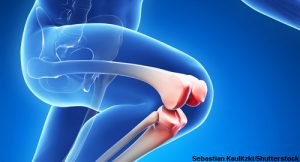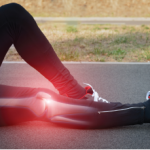 Increasing physical activity among people with knee osteoarthritis (OA) could substantially reduce their disease burden and potentially avert adverse health conditions, such as cancer, cardiovascular disease and diabetes. This key takeaway is from a study by Losina et al. published in Arthritis Care & Research, which looked at the effects of low physical activity on people with OA and the health benefits linked to higher levels of physical activity.1
Increasing physical activity among people with knee osteoarthritis (OA) could substantially reduce their disease burden and potentially avert adverse health conditions, such as cancer, cardiovascular disease and diabetes. This key takeaway is from a study by Losina et al. published in Arthritis Care & Research, which looked at the effects of low physical activity on people with OA and the health benefits linked to higher levels of physical activity.1
Previous studies have described the prevalence of physical activity among knee OA patients, as well as an association between physical activity, pain and function in these patients. This study used a larger lens to capture the broader effect of physical activity among patients with knee OA.
“We offered a big picture view of the impact of low physical activity on the remaining quality and duration of life [in OA patients],” says the study’s lead author Elena Losina, PhD, Robert W. Lovett Professor of Orthopedic Surgery at the Harvard Medical School, director of the Policy and Innovation eValuations in Orthopaedic Treatments (PIVOT) Center, and co-director of the Orthopedic and Arthritis Center for Outcome Research, Department of Orthopedic Surgery, Brigham and Women’s Hospital, Boston.
Gregory W. Heath, DHSc, MPH, Guerry Professor in the Public Health Program, University of Tennessee, Chattanooga, says this study complements what other studies have documented about the link between decreased physical activity and reduced levels of health-related quality of life. Unique to this study is the use of mathematical modeling “to further express these risks of inactivity and benefits of physical activity across the population as a whole, as well as [to] explore intra-individual differences in a measure called quality-adjusted life-years, which seeks to estimate the burden of inactivity in terms of the quality of life of the individual,” he says.
Physical Inactivity’s Effects on Disease Burden
To provide broader view of physical activity on disease burden in people with OA, researchers estimated health-related quality of life losses attributed to inactivity or insufficient levels of physical activity in a cohort of adults with knee OA, aged 45 and older, in the U.S. Estimates were based on person-level projections obtained from the OA Policy (OAPol) model, a computer simulation model of knee OA natural history and treatments. These individual and population-based projections were derived for different sex- and ethnicity-stratified groups.
Quality-adjusted life-year was the metric used to estimate health-related quality of life losses due to physical inactivity, as well as health benefits linked to higher levels of physical activity. The study defined physical activity levels based on the amount of time subjects engaged in moderate to vigorous physical activity in a week: inactive (0 or 0–10 minutes per week), insufficiently active (1–149 or 10–149 minutes per week) and active (more than 150 minutes per week).


